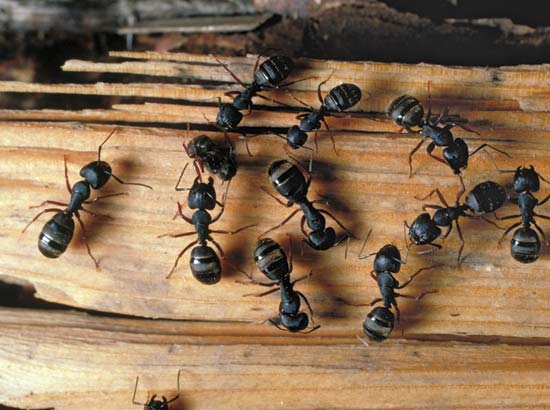Carpenter Ants

Carpenter Ants are often referred to as "black ants" or "big black ants" although some species are not black. Many people think of carpenter ants as being large. In reality, there are thirty possible sizes for carpenter ants. Larger ants indicate a more mature colony: one that has been located in the same area for some time.
Inspection Clues
Carpenter ants are very common in areas that have a high water table. They seek out high moisture areas in and around structures. Though not always the case, when carpenter ants are found in a structure, they are there because of a moisture problem somewhere inside or adjacent to it.
Carpenter ants usually nest either in damp wood or close to it. They may also be found in hollow areas such as hollow doors and curtain rods. Ants will nest in attics near clogged gutters or areas that have been subject to water leaks.
Wood found to be infested with Carpenter ants often has been damaged by wood rot. Wood rot is caused by fungus, a living organism. Wood rot destroys the structural soundness of wood. These ants compound the problem by chewing into and nesting inside the wood.
Ants living in the wood smooth it out with their chewing mouthparts and then live within the galleries they create to take advantage of the high moisture content that they favor. Unlike termites, carpenter ants cannot digest the cellulose in wood and thus do not destroy the wood in the same way as termites.
Prevention and Control
Leaky pipes and other moisture problems should be eliminated to avoid carpenter ants establishing nests in homes. Fire wood should be placed off ground and away from house.
Vegetation surrounding the structure should be cleared or cut back to eliminate any potential entry points into a structure.
Drum Pest Control uses cutting edge tactics in the pest management industry. Specializing in Baiting and Non-Repellent Sprays to eliminate Carpenter Ant colonies.
Drum Pest Control Specializes in the following services.